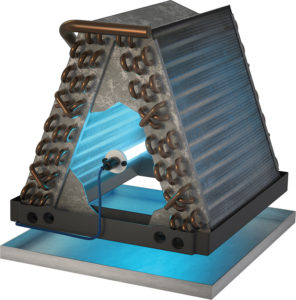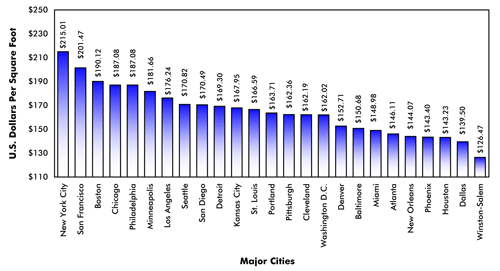Many technologies exist for a building’s mechanical system that filters and clean the air you breathe to increase your safety. One of the suggested methods from the American Society of Heating, Refrigerating, and Air-Conditioning Engineers (ASHRAE) for irradiating viruses and bacteria is the use of short-wave ultraviolet energy (sometimes termed ultraviolet germicidal irradiation [UVGI]). The use of ultraviolet lights within a mechanical system is popular due to its long history of use and researched health benefits. If you are considering retrofitting UV lights into your system, developing a new building with infectious disease spread prevention in mind, or even interested in using a portable cleaning device with UV lights incorporated, this blog will go over your options and what might be the best fit for your situation. In part two of this series, I will explain UV light systems more in-depth.
Ultraviolet Light Systems: Are They For Me?
The first option is retrofitting or installing new UV-C lights into your existing HVAC system. You can place a mountable UV lamp either along a return duct before the air reaches your Air Handling Unit (AHU) or place it next to your AHU’s coil directed at your filter or coil. In general, placing the UV lamp near your coil is a much better option because the effectiveness of irradiating the filter is much higher than irradiating the air stream1. In addition, irradiating the filter also lowers the buildup on it which can lengthen the amount of time that your system operates at a lower static(meaning higher airflow) as well as reduce the amount of time before you must replace the filter1. UV germicidal irradiation uses short-wave ultraviolet energy to inactivate viral, bacterial, and fungal organisms so they are unable to replicate and potentially cause disease. It does this by disrupting the DNA of a wide range of microorganisms, rendering them harmless3. Using UV-C light to clean the air coming from your AHU significantly lowers the concentrations of fungi on the surface of insulation lining as well as significantly lower levels of airborne fungi2.

Example of a UV lamp mounted to irradiate the surface of your HVAC coils.
The cost of these additions is also manageable with typical UV-C lights from popular brands like Guardian Air, Honeywell, Fresh-Aire, Carrier, and Lennox with installation being between $160-$510. The wide range in price depends on whether your system requires the intensity of a two-lamp or one lamplight. Lamp lives range from 9-12 months which means that replacements every year could be $15-$125 largely dependent on whether two lamps are required or not along with about $15-$30 worth of energy every year for these lights. When designing a system effectively that would filter out most viruses that enter your airstream HEPA filters are needed for the larger particles that UV light has more difficulty breaking down. On average each HEPA filter added to your system would be around $75-$150 depending on the type required by your specific system.
Another option available for cleaning space with UV light is a portable air purifier which always includes a HEPA filter as well. Portable air purifiers work using a fan internally to pull air through a filter and sometimes over a UV light to capture or irradiate as many particles potentially containing harmful viruses in the air. These units can range in price to purchase from $200-$1000 for offices or smaller spaces. Renting this type of unit is also an option when setting up temporary isolation rooms or tents. Although less effective because the air is exposed to UV light for less time than installing UV lights into your HVAC system, portable air purifiers can be more cost-effective when a permanent change is not being made.
Although lots of uncertainty exists around what can or cannot control the spread of airborne disease, UV-C light has proven to be an effective tool in irradiating airborne viruses. If you or anyone you know is looking to install or retrofit a new HVAC system with virus protection in mind, please contact EVstudio today!
Disclaimer: Exposure to short-wave ultraviolet light can be extremely hazardous and should be avoided at all costs. Seek a professional before installing any fixture that may expose you to direct short-wave ultraviolet light.
For Part One, Click Here.
Sources:
1D’Orazio A, D’Alessandro D. Air bio-contamination control in hospital environment by UV-C rays and HEPA filters in HVAC systems. Ann Ig. 2020;32(5):449-461. doi:10.7416/ai.2020.2369
2Levetin, E et al. “Effectiveness of germicidal UV radiation for reducing fungal contamination within air-handling units.” Applied and environmental microbiology vol. 67,8 (2001): 3712-5. doi:10.1128/AEM.67.8.3712-3715.2001
3Brickner, P.W., R.L. Vincent, M. First, E. Nardell, M. Murray, and W. Kaufman. 2003. The application of ultraviolet germicidal irradiation to control transmission of airborne disease: Bioterrorism countermeasure. Public Health Report 118(2):99-114.
UV-Lamp picture: https://www.freshaireuv.com/residential/blue-tube-uv/




